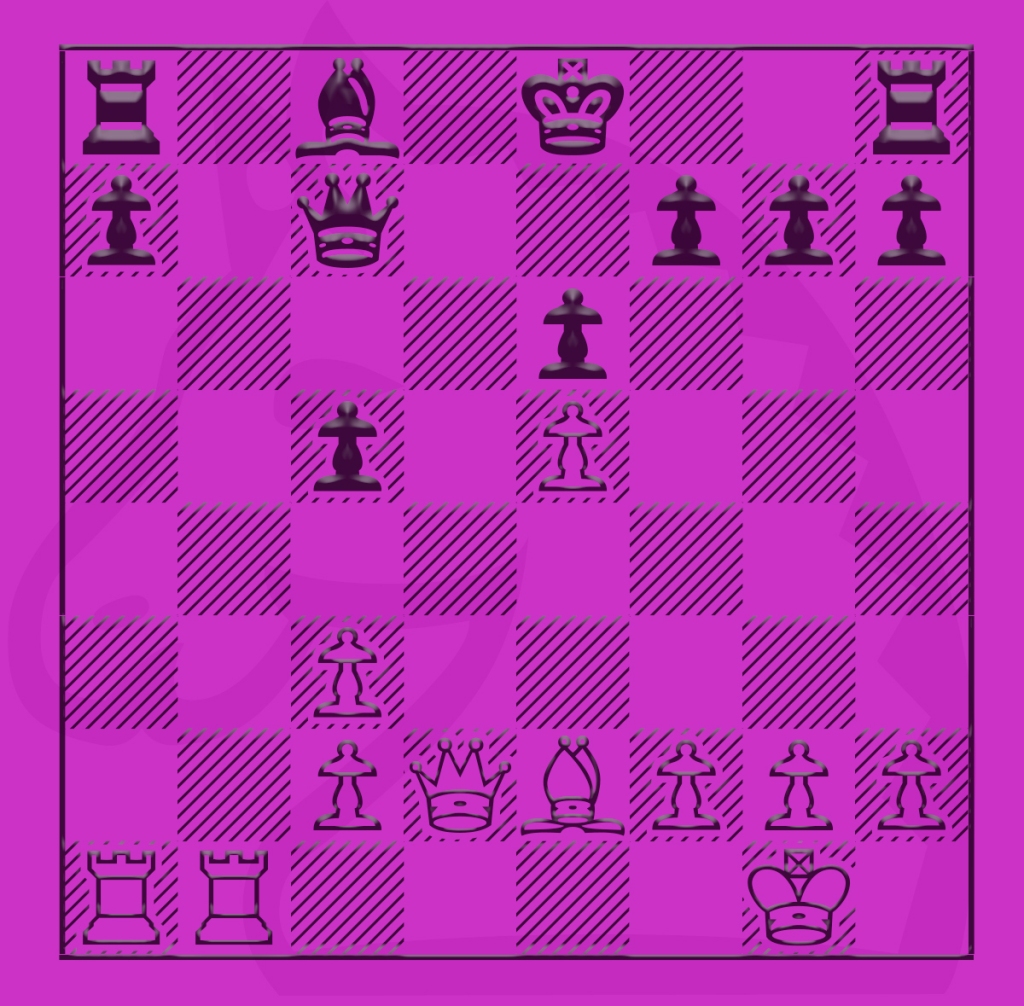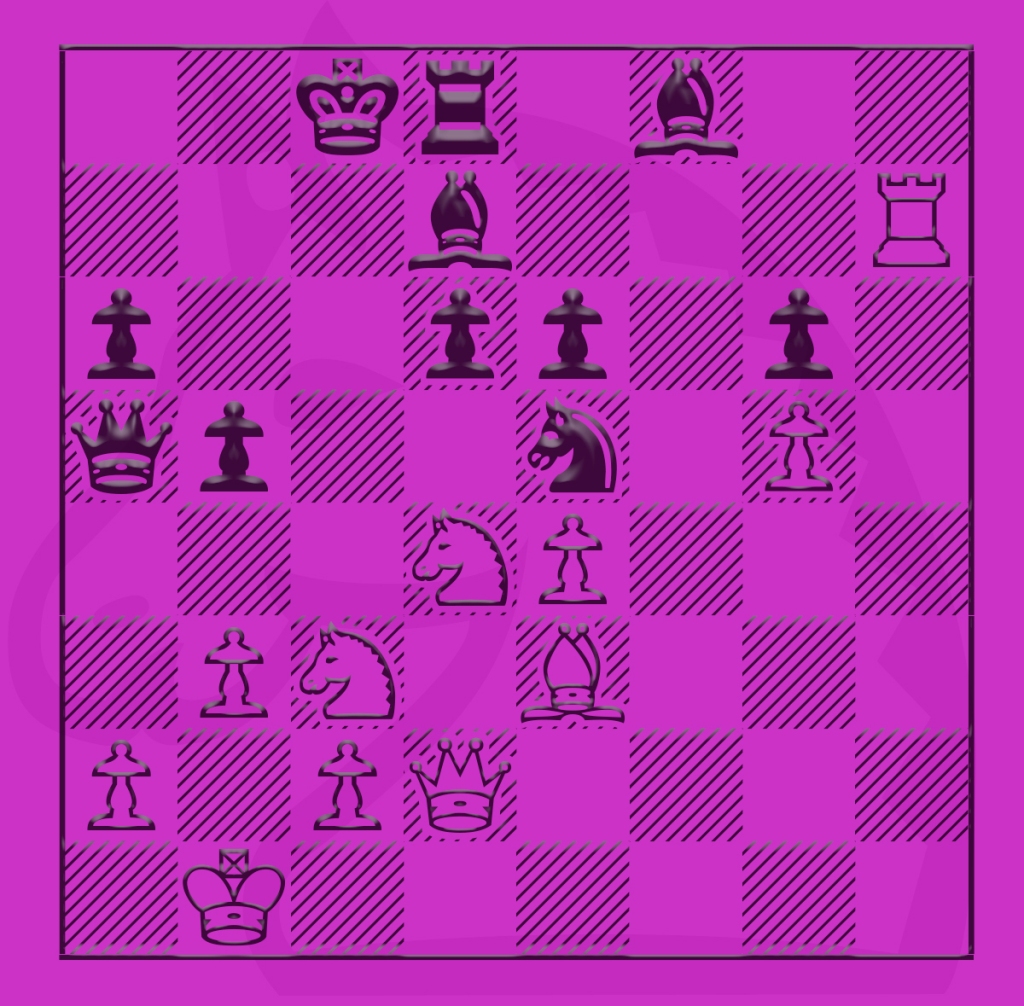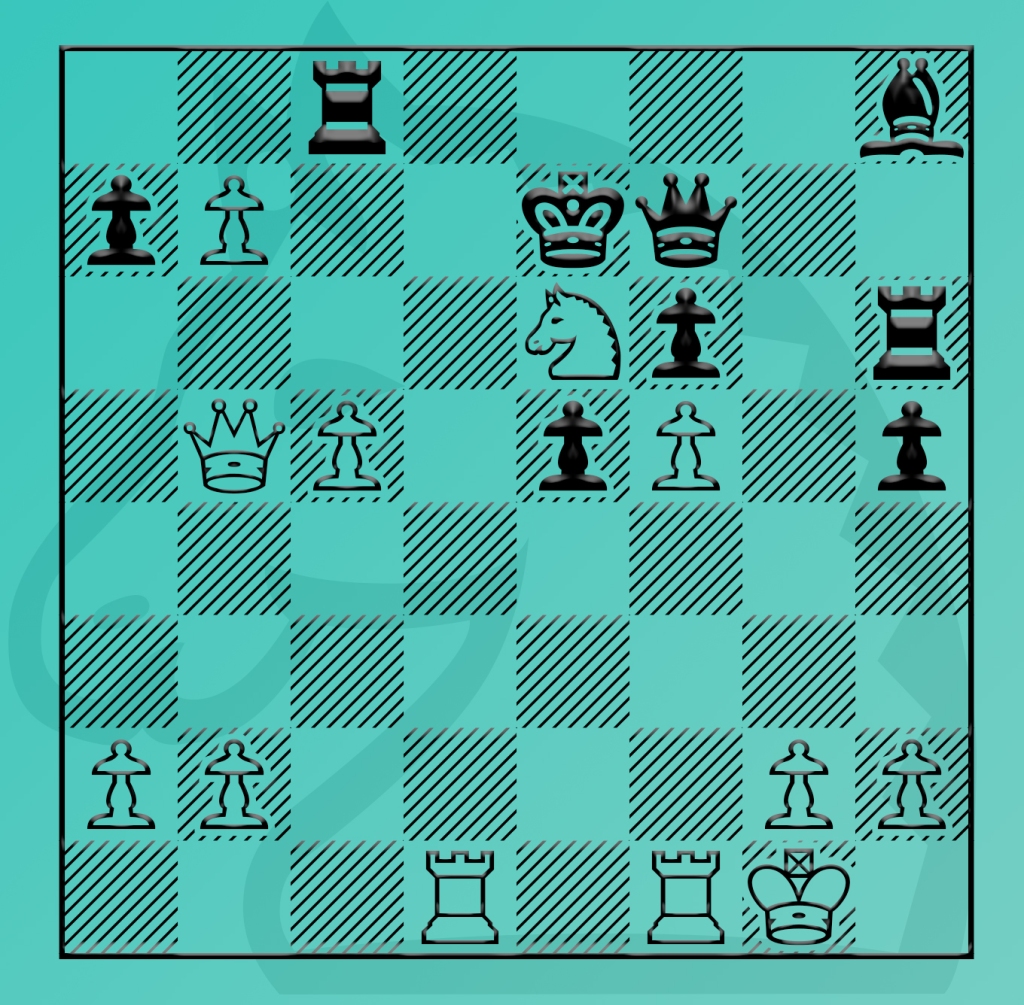The “!” of course is referring to good, or even brilliant, moves. And most of the time, this also the move is tactical in some way, although a few may be more positional than tactical.
Your job here is find these moves in the next six games. To make finding these moves more fun, and slightly easier to solve, there is a clue before each game.
And if you need help or just want to see the end of the games, download the PDF file titled, “!_Moves”.
Here we go!
~~~~~~~~~~~~~
1) First move in the combination might be easy to find. But can you find all the following moves?
MR. Woodcock-Peter E. Williams
British Universities Ch., Preliminaries C
Manchester, Apr. 13 1970
1.e4 e6 2.d4 d5 3.Nc3 Bb4 4.e5 c5 5.Nf3 Nc6 6.Be3 Qa5 7.Qd2 cxd4 8.Bxd4 Nge7 9.Bd3 Nxd4 10.Nxd4 Nc6 11.Nxc6 bxc6 12.Be2 c5 13.O-O d4 14.a3 dxc3 15.axb4 Qxb4? (White’s queen is more active than Black’s and should be taken or exchanged as soon as possible. 15…cxd2 is best.) 16.bxc3 Qb6 17.Rfb1 Qc7

2) A positional move as well as a tactical one.
GM Arthur Bisguier-Paul Brandts
Manhattan C.C. Ch.
New York, 1967
[Hans Kmoch, “Games from Recent Events”, Chess Review, May 1967]
1.e4 e5 2.Nf3 Nc6 3.Bb5 a6 4.Ba4 Nf6 5.O-O Be7 6.Qe2 b5 7.Bb3 d6 8.c3 Bg4 9.d3 (Intent on rendering the pin on his Knight useless, White avoids 9.d4 as well as the weakening h3.) 9…Na5 10.Bc2 c5 11.Re1 Nc6 12.Nbd2 Nh5 (Black ought still to castle. He is only compromising his own position in trying to act against White’s unweakened Kingside.) 13.Nf1 g5 (And this weakening is too serious. 13…g6 is hardly consistent but playable: 14.Bh6 Bxf3 15.Qxf3 Bg5 16.Bb3 Nf4.) 14.h3! Nf4 (Black has to save this Knight: 14…Be6 or 14…Bd7 permits 15.Nxe5! etc.) 15.Bxf4 Bxf3 16.Qxf3 exf4 17.Qh5! (This blockading move thwarts Black’s plan thoroughly.) 17…Qb6 18.Rad1 Ne5 19.d4 cxd4 20.cxd4 Rc8 21.Bb3 Nc4 (Now 21…Nc6 22.e5 makes decisive headway.) 22.Nh2 Nxb2 23.Qxf7+ Kd8 24.Rd2 Nc4 25.Bxc4 bxc4 26.Nf3 Qb5 27.d5 Qe8 28.Qg7 Qf8 29.Qc3 (Naturally White avoids trading Queens. Now the showdown looms on the Queenside while Black’s Queen strays on the other wing. 30.Nd4 is a strong threat.) 29…Bf6 30.Qa5+ Kd7 31.Qa4+ Kd8

3) Sometimes castling is the best move. And sometimes it is not.
Rachel Crotto-Kathleen Hindle
Women’s Ol.
Haifa, Oct. 30, 1976
1.e4 c5 2.Nf3 d6 3.d4 cxd4 4.Nxd4 Nf6 5.Nc3 g6 6.f4 Bg7 7.e5 dxe5 8.fxe5 Ng4 9.Bb5+ Bd7 (Back rightly avoids 9..Kf8? 10.Ne6+ fxe6 11.Qxd8+ Kf7 12.O-O+. So, what to do now? White plays a simple move and yet winning, move. But White still has yet to prove it.) 10.Qxg4 Bxb5 11.Ndxb5 Bxe5 12.Bh6 a6?

4) You don’t need to see it all the way to know if a move is good
Andre Lilienthal-Jose Raul Capablanca
Hastings, 1935
1.d4 Nf6 2.c4 e6 3.Nc3 Bb4 4.a3 Bxc3+ 5.bxc3 b6 6.f3 d5 7.Bg5 h6 8.Bh4 Ba6 9.e4?! Bxc4 (Black also has 9…g5 or 9…dxc4 which are probably better.) 10.Bxc4 dxc4 11.Qa4+ Qd7 12.Qxc4 Qc6 13.Qd3 Nbd7 14.Ne2 Rd8 15.O-O a5 16.Qc2 Qc4 17.f4 Rc8 18.f5 18..e5 19.dxe5 Qxe4 (Possibly better is 19…Qc5+.)

5) Black only needs one piece!
V. Rubenchik (2308)-Saul Wanetick
US Amateur Team Ch. East, 1996
1.e4 c5 2.Nf3 Nc6 3.d4 cxd4 4.Nxd4 Nf6 5.Nc3 d6 6.g3!? Bd7 7.Bg2 e6 8.O-O a6 9.a4 Be7 10.Kh1 O-O 11.f4 Nxd4 12.Qxd4 Bc6 13.Be3 Rc8 14.a5?! Ng4 15.Bg1 Bf6 16.Qb4 Bxc3 17.bxc3 f5 18.Rfd1 fxe4 19.Rxd6 Qf6 20.Bxe4?

6) Again, sometimes it just takes one piece. Or two of the same.
GM Inkiov-IM Lukin
Plovdiv, 1984
1.e4 c5 2.Nf3 d6 3.d4 cxd4 4.Nxd4 Nf6 5.Nc3 a6 6.Be3 Nbd7 7.Qd2 e6 8.f3 Qc7 N 9.g4 h6 10.h4 Ne5 11.Rg1 Nfd7 12.f4 Nc4 13.Bxc4 Qxc4 14.g5 hxg5 15.hxg5 g6 16.O-O-O b5 17.b3! Qc7 18.f5 Ne5?! 19.Rh1 Rxh1 20.Rxh1 Bd7 21.fxe6 fxe6 22.Rh7! Qa5 23.Kb1! O-O-O?

The answers, if you need them, can be found here :

